With that in mind, I’m sharing tips and advice to help you understand how to optimize your website design with SEO in mind.
Table of Contents
- What is SEO web design?
- Why is SEO important for web design and development?
- How to Diagnose SEO Web Design Issues Using Analytics: 5 Metrics to Watch Out for
- Web Design Elements to Optimize for SEO
- SEO web design should stay top of mind.
What is SEO web design?
SEO web design is about creating and organizing websites using methods that help them rank better on search engines such as Google and Bing.
While keyword optimization is crucial to SEO strategy, you should integrate SEO principles into design, development, and copywriting.
This holistic approach to SEO ensures that your website is user-friendly, conversion-focused, and optimized for higher ranking on search engines.
At a high level, know that you’ll need to consider a blend of written, visual, and technical elements that include:
- Site structure and navigation.
- Mobile-friendliness
- Page load speed
- Copy and content optimization
- User experience (UX)
I’ll explore these elements and more in a few moments, explaining how they relate to SEO web development and offering tips to optimize each.
But first, let’s clarify why you must approach website design with SEO in mind if you want to stand out in the business world.
Why is SEO important for web design and development?
First, I always say that every business is an online business. While it’s been true for a long time, most businesses started realizing it during the pandemic when the entire world shifted online.
Not convinced?
Even if you run a brick-and-mortar business, prospective clients probably Google you before deciding to contact you. Your website lends you legitimacy, authority, and credibility.
And while personal recommendations go further than just about anything else, if someone is on the fence, seeing that you’re legit can tip the scales in your favor.
Of course, conversion-focused design and copy go deeper than simple credibility. However, if they’re searching for you, one thing is clear — they have to find you.
And that’s where SEO website development comes in. By optimizing your site for search, you’ll enjoy several benefits, which include the following.
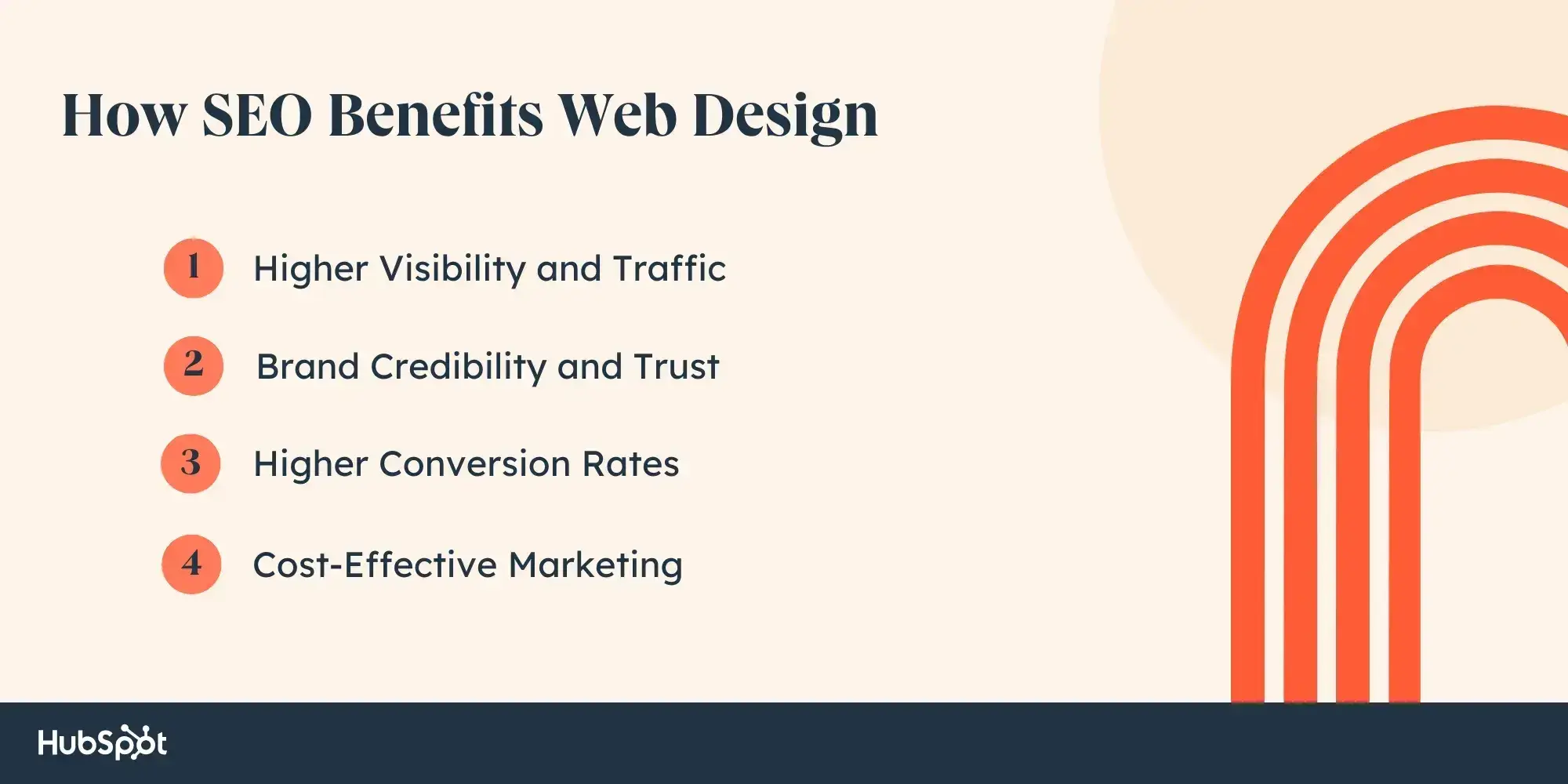
Higher Visibility and Traffic
In addition to people finding you by your name or company name, they can start to find you by searching for what you do.
Sure, they can probably find you directly by searching for Acme Hair Salon or whatever your business name is. But when you’re optimized for SEO, they can also find you by searching for “hair stylist near me” or “hair stylist in [town name].”
Brand Credibility and Trust
As I mentioned, having a website lends you a great deal of credibility. Being one of the first listings on Google, thanks to SEO optimization, gives you a boost.
And, if your site looks great and builds trust right away, your prospective clients are more likely to reach out as soon as they feel comfortable working with you.
Higher Conversion Rates
When people are actively searching for you or what you do, there’s a good chance that they’re ready to buy or at least further along the customer journey.
Coupled with an SEO strategy that targets different levels of user intent, your conversion rate is likely to rise. HubSpot’s content marketing software can really help you hone in on this.
Cost-Effective Marketing
If your website isn’t designed with SEO or conversion in mind, search engines may have a tough time finding content that your audience is looking for, which means you get pushed down in the rankings.
And since you’re virtually swimming upstream, you’ll get less bang for your buck with your PPC campaign ad spend—not to mention that when people do click, if your landing page is not optimized for conversion, they may click away.
More than once, I’ve partnered with SEO web designers and ad specialists to rewrite website copy for an optimization project.
I also know lots of ad agencies that have launched web design divisions to ensure they can help their clients get results. SEO web design is simply that important.
Alternatively, if you’re bootstrapping your SEO web development project, you can use a drag-and-drop website builder like HubSpot’s to shorten your timeline and get results faster.
How to Diagnose SEO Web Design Issues Using Analytics: 5 Metrics to Watch Out for
For this blog post, I asked SEO consultants and web designers for tactical advice on how to use analytics to diagnose web design issues that affect SEO.
If you find the following in your analytics reports, you might be facing an SEO web design problem.
1. Slow Largest Contentful Paint (LCP)
“A key metric to focus on is Largest Contentful Paint (LCP), which tracks how quickly the main content on a page, like a headline or image, loads,” says Senior SEO Consultant and Strategist Chris Burdick.
“If it takes longer than 2.5 seconds, visitors might get frustrated and leave, which can hurt your rankings. One of the biggest issues is usually large, unoptimized images or unnecessary code slowing things down.”
You can check your Largest Contentful Paint by entering your URL into Google PageSpeed Insights.

To speed up your LCP, Burdick recommends starting with an image compression tool like TinyPNG. This tool makes those files smaller so they load faster on the page.
“You can also enable lazy loading so images only load as visitors scroll (but don‘t use that on a header image),” he says. “Take a closer look at your code, too, removing anything you don’t really need and deferring JavaScript that's not essential.
“Pair these tweaks with a Content Delivery Network (CDN) for even faster load times. After making changes, test your site with Google PageSpeed Insights to see the impact.”
2. Excessive Crawl Errors
If you’ve recently undergone a website redesign, this SEO web design mistake might especially affect you.
“If the Google Search Console shows excessive crawl errors, including 404 and 500 errors, or some pages are excluded from Google's index, these are signs that some underlying issues may hurt SEO,” says Steve Yang, COO of Channelwill. “The most common problems are broken links, inaccurate redirects, poor site structure, and excessive crawl depth.”
Yang suggests using a site audit tool to find and fix broken links. I recommend Screaming Frog SEO Spider, which is free for up to 500 URLs. Also, make sure you’ve set up 301 redirects correctly.
“Additionally, website owners can focus on optimizing the internal linking structure for better crawlability,” Yang says.
3. Low Scroll Depth
Blake Smith, founder and SEO consultant at Blake Smith Consulting, says scroll depth can tell website owners a lot about their web design.
“This can reveal where users are dropping off on a page, which often indicates a design problem impacting both engagement and search performance,” Smith explains. “For example, we once identified a significant drop-off point where users mistook a stark background color shift for the page's footer, causing them to stop scrolling prematurely.
“To fix this, we redesigned the section to create smoother, more gradual background transitions and added subtle visual cues, such as overlapping elements and directional arrows, to encourage continued exploration.”
The result? Scroll depth improved by 25%, and time on page increased, too.
“The takeaway for website owners is to combine user behavior tracking, like scroll depth and heatmaps, with design testing to ensure visitors engage fully with the content,” says Smith. “Small design adjustments can significantly improve user experience and positively impact SEO performance.”
4. Slow Time to First Byte
“One overlooked metric is often key to diagnosing SEO-related design issues: Time to First Byte (TTFB),” says Nicholas Robb of Design Hero, a design agency for startups. “Most people focus on visual elements or content, but TTFB directly impacts how search engines and users perceive your website's speed and quality.”
Robb recommends looking beyond hosting and server configurations and diving into design.
“For example, a bloated theme with poorly optimized code or unnecessary third-party scripts can drastically slow your server‘s response,” he says. “I’ve seen beautifully designed sites with killer content lose rankings simply because their TTFB exceeded 600 milliseconds.
“I once worked with a client whose site traffic dropped despite investing heavily in on-page SEO. Their TTFB was over one second when I dug deeper due to an overloaded homepage.
“The fix? I stripped redundant plugins, lazy-loaded heavy assets, and optimized the theme's database queries. Their TTFB dropped to 200ms, and their organic rankings bounced back within weeks.”
5. High Bounce Rate
“If you're looking for one metric to uncover web design issues affecting your SEO, bounce rate is a great place to start,” says Paulo Andrade, SEO manager at SWOT Digital.
Andrade says that “slow loading times, awkward navigation, or a poor mobile experience” are often the culprits behind visitors leaving your site immediately without exploring more.
“To tackle this, start by checking your site speed. Compress large images, cut down unnecessary scripts, and use tools like Google PageSpeed Insights to pinpoint issues,” he says. “Then, focus on making your site mobile-friendly — test it on different devices to ensure it's responsive and easy to use.”
“Clear, simple navigation is also key; visitors should never feel lost. Finally, think about your content. Is it helpful? Easy to skim? If it doesn‘t grab attention right away, visitors might click away. By fixing these issues, you’ll keep visitors on your site longer, improve SEO, and create a smoother, more enjoyable experience for everyone.”
Web Design Elements to Optimize for SEO
Now that you’ve used analytics to diagnose potential SEO web design issues, what are some design elements you should optimize?
Here are some specific elements you can focus on to ensure your site looks great and rises to the top of search results.
1. Site Structure and Navigation
When you organize your content into a clear, logical hierarchy with a well-defined structure of categories, subcategories, and pages, search engines have an easier time finding what your audience is looking for.
From a technical SEO standpoint, breadcrumb navigation can help people and bots find what they need.
Pro tip: Before I start a new website copywriting project, I first work with my go-to SEO researcher to identify key terms and what will help us stand out. Then, I sit down to outline the planned page structure, menus, and content for each page.
2. URL Structure
Long, cumbersome URLs are a pain for everyone — humans and bots alike. The more descriptive and keyword-rich, the better. And you’ll be primed for optimal success if you choose a structure that works for the rest of the site.
Need an example? Here’s what not to do:
yoursite.com/how-to-write-really-great-copy-for-your-website-so-humans-and-search-engines-love-it
The above URL includes all the “little” words. And even though it might be something people actually search for, there’s a lot of noise for search engines to dig through.
On the other hand, when you keep it short, sweet, and focused, it helps your site win.
yoursite.com/great-SEO-copywriting-tips
This option is descriptive and makes it easy to understand what the page is about.
Similarly, I’d recommend using /about instead of /about-us and /contact instead of /contact-us to keep things clean and focused.
Pro tip: When I’m writing copy for a site, whether individual web pages or blog content, I identify the slug, or what comes after the slash, so whoever is in charge of implementation has a guide to follow. (I also include the meta content here so it’s a matter of copy and paste.)
3. Mobile Optimization

According to StatCounter, globally, over 60% of searches are mobile. For some industries and businesses, that’s much higher. Anecdotally, my B2C clients have more mobile website visitors than my B2B clients.
Regardless, responsive design, where your site accommodates a variety of screen sizes and devices, is an absolute must! If your audience cannot use your site on their mobile devices, all your other SEO efforts will be for naught.
Pro tip: Test your site on a variety of devices. You may need different touch elements for mobile use — buttons, menus, CTAs, and more — to make sure that your audience can use your site from their mobile devices.
In fact, after you look at your Google Analytics, I’d encourage you to consider building your site for mobile FIRST and then adapting it to desktop second.
4. Page Load Speed
You can get a sense of whether or not your site is loading fast just by using your site. Then, you can get numbers to back up your gut check by using a page speed test tool. GTmetrix is one of my favorites (because it’s SO user-friendly).
So, what do you do if your pages load slowly? GTmetrix can give you detailed reports so you know what to fix. Here are a few common culprits:
- Large images
- Too many HTTP requests
- Redirects
- Caching issues
While a lot of these require technical know-how, an easy fix can often involve compressing larger images.
Pro tip: Use the free tool Website Grader to quickly diagnose any page load speed issues. For example, it can tell you if your page size is too large or there are too many HTTP requests. It then suggests how to fix it!
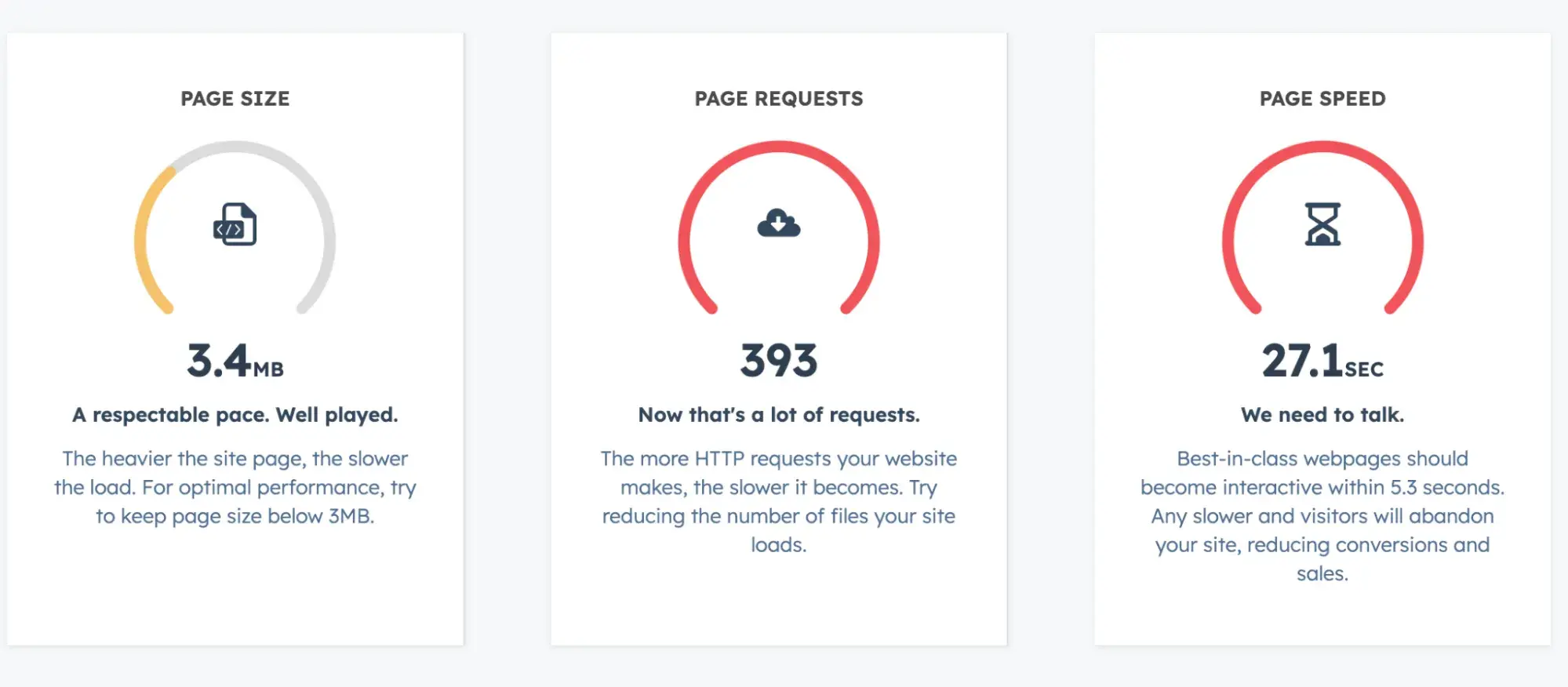
5. Content Optimization
My favorite content SEO strategy is focusing on what I find interesting and the questions I see in the wild. Then, I find keywords that work for those and naturally incorporate them in titles, headers, meta descriptions, and key areas of the content.
Website copy can be considerably different from blog posts. So, let’s look at a few best practices.
Make all of your headlines and content hierarchical.
Your title is H1, all of your section headlines should be H2, and any nested subheadings should be H3, H4, etc., as needed. It would look like the following.
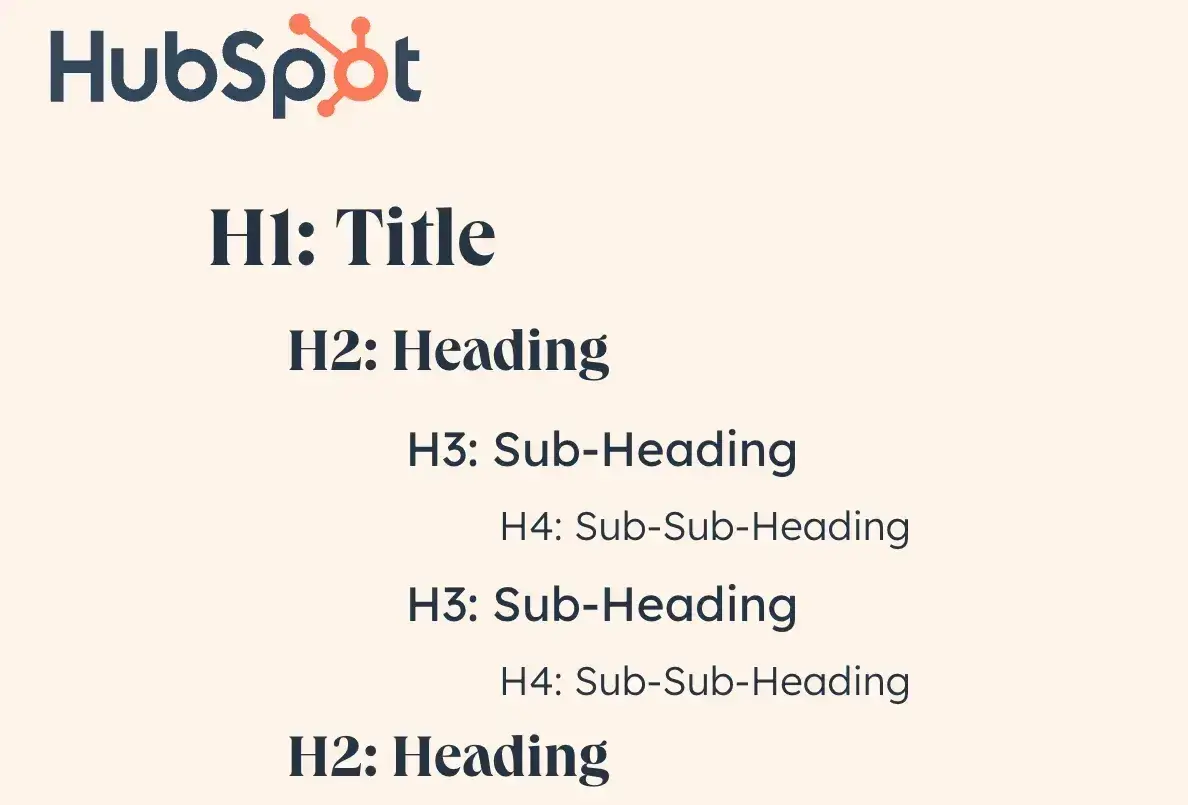
Incorporate your keywords.
You can use a tool like Yoast or HubSpot’s SEO Marketing Software to identify how to improve.
At a high level, your main keyword (or a version of it) should appear in the title, intro paragraph, at least one header, and once every 200 words or so. You’ll also want some ancillary keywords.
Pro tip: When I’m getting ready to optimize content, I look at my analytics to see what pages are performing well and which have fallen down in the rankings.
For those that aren’t performing as well, I focus on shoring them up, maybe with additional content, and certainly to make sure all of the content is still relevant and up-to-date.
6. Meta Description
What are meta descriptions? They’re sections of text that might appear as a search snippet.
Your task here is to make sure each page on your site has different meta descriptions that are both descriptive and enticing while incorporating keywords. And since you’ve only got 160 characters, give or take, you’ve got to be concise.
Pro tip: My advice is to use a spreadsheet to track the URL, target keywords, and meta description. Then, you can focus on making them all different and maintain a quick reference if needed.
7. Internal Linking
One of the saddest things in website talk is when an incredible blog post is an orphan, with no incoming links from any other page on your site.
Why? People are more likely to find something if you tell them it’s there.
When you use internal linking, your audience can find more content that can help them either get the information they need or know that you’re the best possible choice. Better yet, it helps search engines, too.
Pro tip: I’ve found the best click-through rates happen when people know exactly where the link is taking them.
To make this work for you, instead of using “click here” as anchor text when you’re guiding someone to an article about tracking their rank, consider a contextual mention with text about “the best rank trackers” to help people and bots make the choice.
8. User Experience (UX)
I’ve talked a bit about why UX is so important — if your site is a pain to use, people will move on quickly. So instead of waxing on about it, let’s focus on some do’s and don’ts.

Pro tip: This list has a LOT to keep in mind. My advice is to focus on KISS — keep it simple, sweetheart.
9. Technical SEO
I’m the first to admit that technical SEO can be a beast. And the good news is you don’t have to tame it alone.
You can use HubSpot’s suite of SEO tools to tackle this more manageably. Using your own software? This guide on Google’s Search Essentials can help you harness SEO to your advantage.
So, what are some of the things technical SEO covers?
- XML Sitemaps that help Google and other search engines crawl and index pages
- Robots.txt files to control which parts of your site search engines can crawl
- SSL Certificates to secure your site and improve trustworthiness
Pro tip: If you’re looking for any support with Google SEO, you can go directly to the source in Search Central. Their resources walk you through just about any fix you need.
10. Accessibility
Accessibility isn’t talked about enough, in my opinion. However, it’s one of the most important things to focus on as your site grows. In fact, it’s not a feature; it’s the law. Here are some areas to consider:
- Provide text alternatives for non-text content (commonly referred to as “alt text”).
- Make sure all links and form inputs have descriptive text.
- Add “skip to content” links, which are helpful for people using keyboards and screen readers.
- Make your site accessible for keyboard navigation.
- Make sure accessibility features translate to mobile versions of your site.
Pro tip: Accessibility isn’t an area to skimp on and shouldn’t be an afterthought. You can start by going through all of your images to make sure they have alt text, and then use our web accessibility guide to make sure you’re on the right track.
11. Overall Performance
Look, overall performance isn’t really an element, and I get that. But by keeping an eye on how your site is doing, you can stay on top of any problem areas and make significant improvements in how trustworthy Google and other search engines see your site.
There are several great website performance tools to try. Two of my favorites are:
HubSpot’s Website Grader
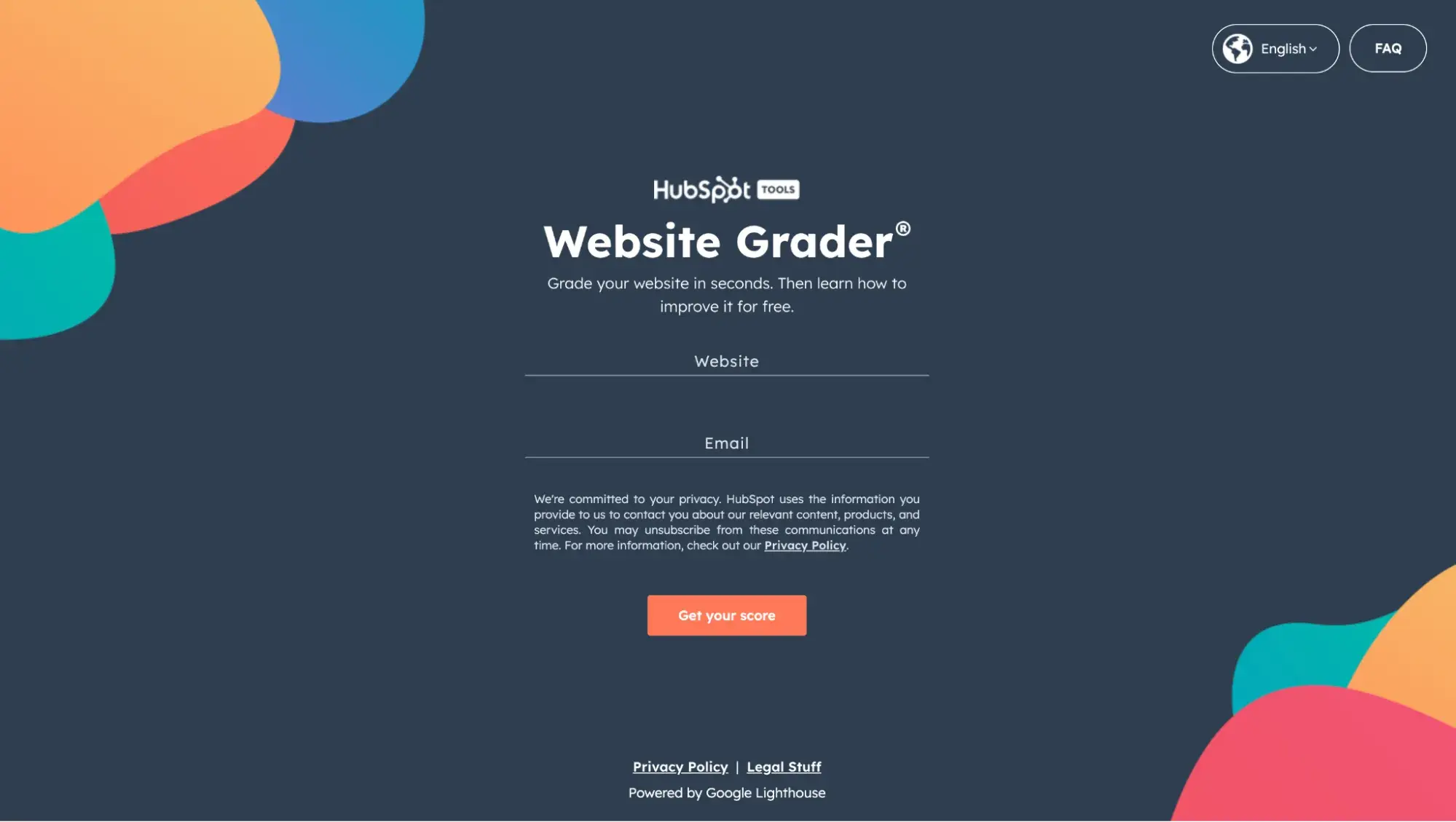
Just plug in your URL and email, and you’ll get a simple report with easy-to-follow recommendations.
After I plugged my report in, I got a simple “This site is good!” with a score of 82, followed by simple recommendations.
Unsurprisingly, I learned my site could be stronger on mobile. And while that’s a priority, especially since it plays a significant role in trustworthiness, 83% of my users are on desktop, so I haven’t put as much effort into it.
Best for: People who want a high-level understanding of how they’re doing
Ahrefs Webmaster Tools
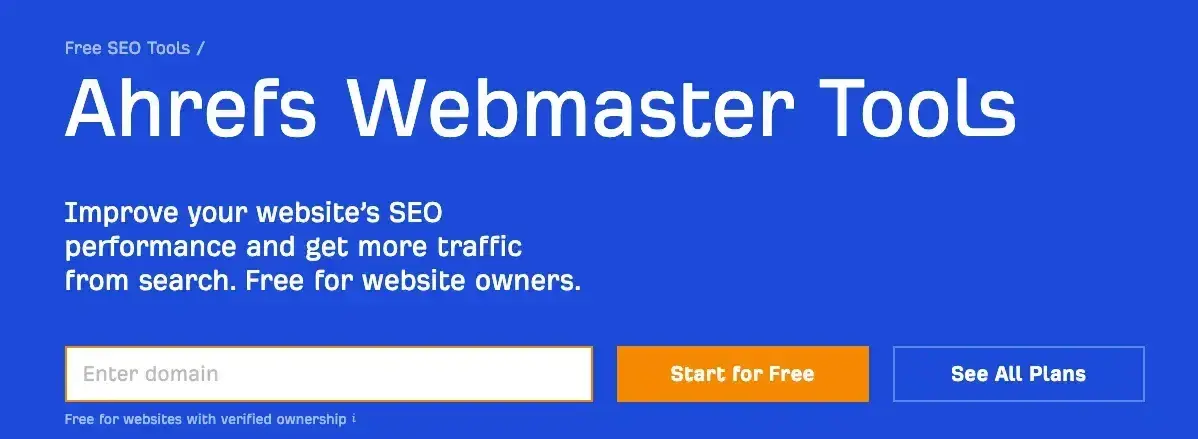
While much of Ahrefs requires payment, they have a sweet suite of tools available only to people who verify website ownership through Search Console.
Their regular reports help me stay on top of any broken links or other issues, while also tracking SEO and organic traffic performance.
While not nearly as simple or user-friendly, these reports go into page-by-page detail so you can fix what’s wrong.
Best for: People who want to take a hands-on approach and go into specifics
SEO web design should stay top of mind.
Optimizing your website for SEO may seem as simple as following a checklist like I’ve provided here. However, in my experience, it’s not quite as straightforward as checking off a series of boxes. Because it involves creativity, there’s considerably more nuance.
So what should you do? Focus on your audience first. Pay attention to what they want and need (and their feedback), and integrate that with these best practices I’ve shared here so your site is beautiful, functional, and SEO-friendly.
The bottom line? Know that this isn’t a one-and-done project. As your website evolves, your SEO strategy should, too.
Editor's note: This post was originally published in August 2024 and has been updated for comprehensiveness.
SEO


.png)